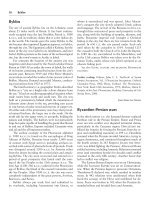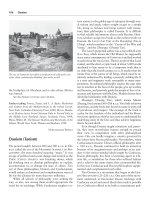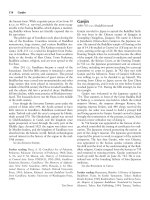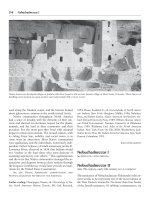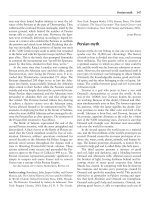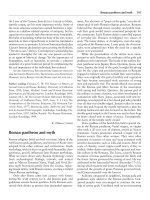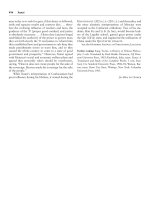Encyclopedia of world history (facts on file library of world history) 7 volume set ( PDFDrive ) 3237
Bạn đang xem bản rút gọn của tài liệu. Xem và tải ngay bản đầy đủ của tài liệu tại đây (209.37 KB, 1 trang )
terrorism
Beautiful for God: Mother Teresa of Calcutta. New York:
Harper and Row, 1971.
Brian Kolodiejchuk
terrorism
Terrorism—attacks on civilians and noncombatants
for political purposes—has an ancient history. In earlier eras, terrorism was often religiously motivated. In
the first century c.e. Jewish Zealots fought the Romans;
the Assassins, a Shi’i sect of Islam, killed Muslims who
disagreed with their practices in the 11th century; and
Hindu Thugees in India killed innocents as part of ritualistic practices from the 7th to the 19th century.
From the 18th to the late 20th century, most terrorists were motivated by nationalist or political causes.
Contemporary terrorism is systematic, political, conveys
a message, and generates fear. Terrorism may be committed by a state or by individual groups, although some
dispute the use of the term for governmental actions. In
417
English the term terrorism derives from the French revolutionary reign of terror under Maximilien Robespierre,
when thousands were sent to their deaths, often at the
guillotine, in 1793–94.
After World War II nonstate groups often adopted
terrorist tactics to achieve political goals. Terrorism
was usually the tactic of the weak and disaffected who
lacked access to or possession of high technology and
sophisticated weapons of war. In the modern era, the
media and instant communications provided terrorists
with ready platforms to publicize their programs and
grievances. Publicity on a global scale permitted terrorists to have a psychological impact far beyond single
deeds, thereby greatly magnifying their effects.
In their struggles against imperial powers, Third
World liberation movements sometimes adopted terrorist tactics by attacking civilians as well as colonial
armed forces to achieve national independence. Third
World leaders often argued that these tactics were no
less “terrifying” or horrific than the bombing of villages, the use of napalm, or the imprisonment of thousands
in concentration camps. However, governments tended
The Pentagon in Washington, D.C., was damaged by a terrorist attack on September 11, 2001, concurrently with attacks on the World
Trade Center using hijacked airliners filled with passengers. Nearly 3,000 people lost their lives in the attack.

